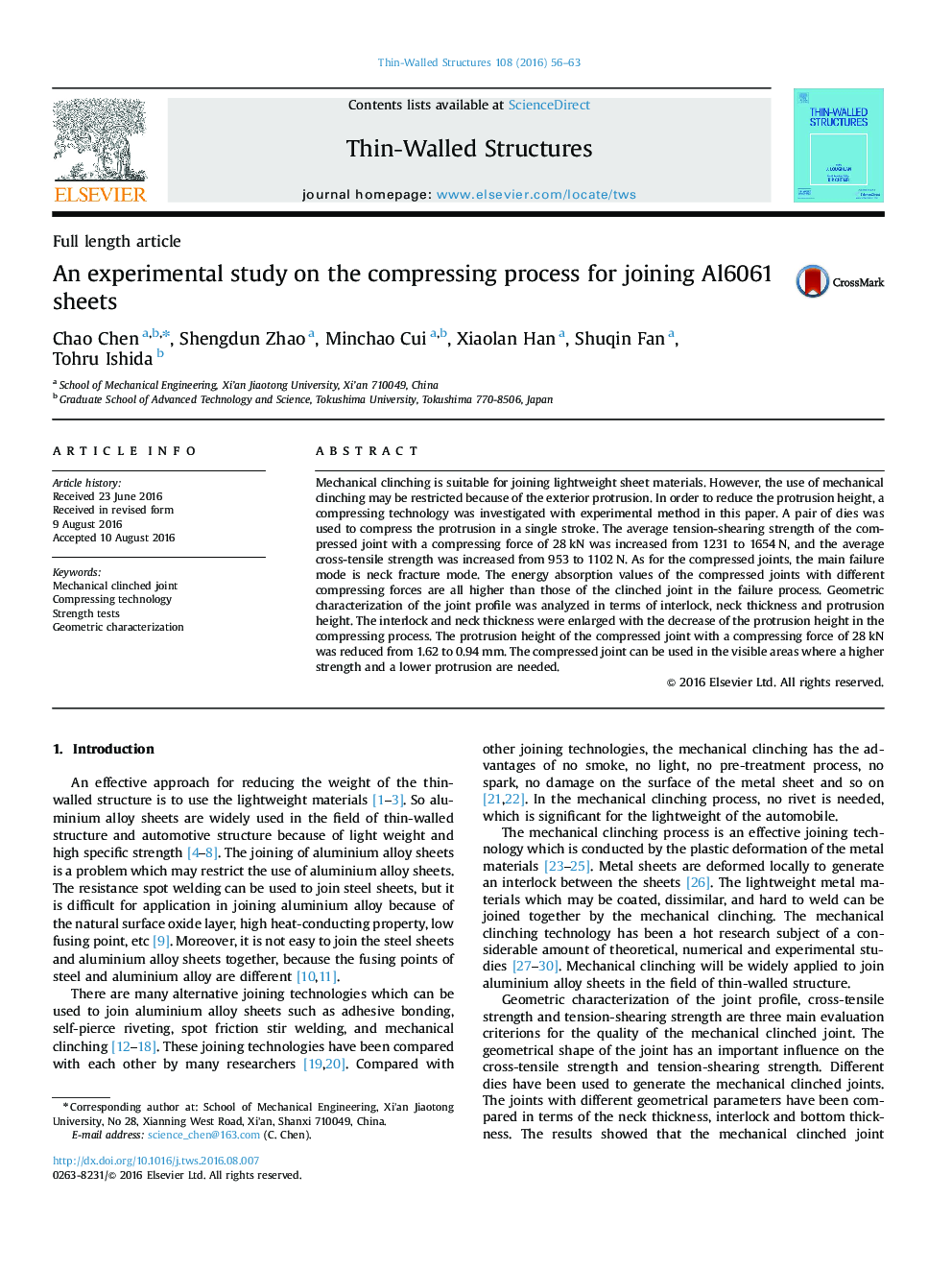| Article ID | Journal | Published Year | Pages | File Type |
|---|---|---|---|---|
| 6778788 | Thin-Walled Structures | 2016 | 8 Pages |
Abstract
Mechanical clinching is suitable for joining lightweight sheet materials. However, the use of mechanical clinching may be restricted because of the exterior protrusion. In order to reduce the protrusion height, a compressing technology was investigated with experimental method in this paper. A pair of dies was used to compress the protrusion in a single stroke. The average tension-shearing strength of the compressed joint with a compressing force of 28Â kN was increased from 1231 to 1654Â N, and the average cross-tensile strength was increased from 953 to 1102Â N. As for the compressed joints, the main failure mode is neck fracture mode. The energy absorption values of the compressed joints with different compressing forces are all higher than those of the clinched joint in the failure process. Geometric characterization of the joint profile was analyzed in terms of interlock, neck thickness and protrusion height. The interlock and neck thickness were enlarged with the decrease of the protrusion height in the compressing process. The protrusion height of the compressed joint with a compressing force of 28Â kN was reduced from 1.62 to 0.94Â mm. The compressed joint can be used in the visible areas where a higher strength and a lower protrusion are needed.
Related Topics
Physical Sciences and Engineering
Engineering
Civil and Structural Engineering
Authors
Chao Chen, Shengdun Zhao, Minchao Cui, Xiaolan Han, Shuqin Fan, Tohru Ishida,
